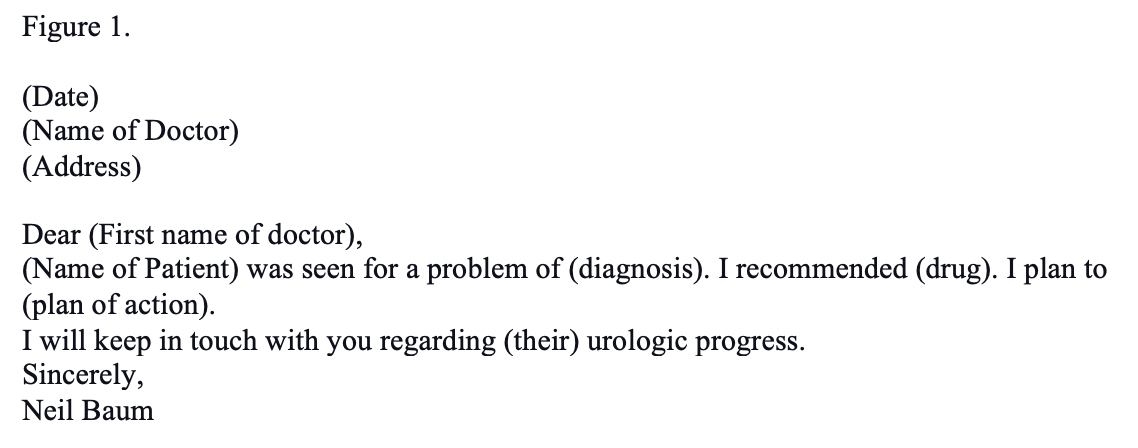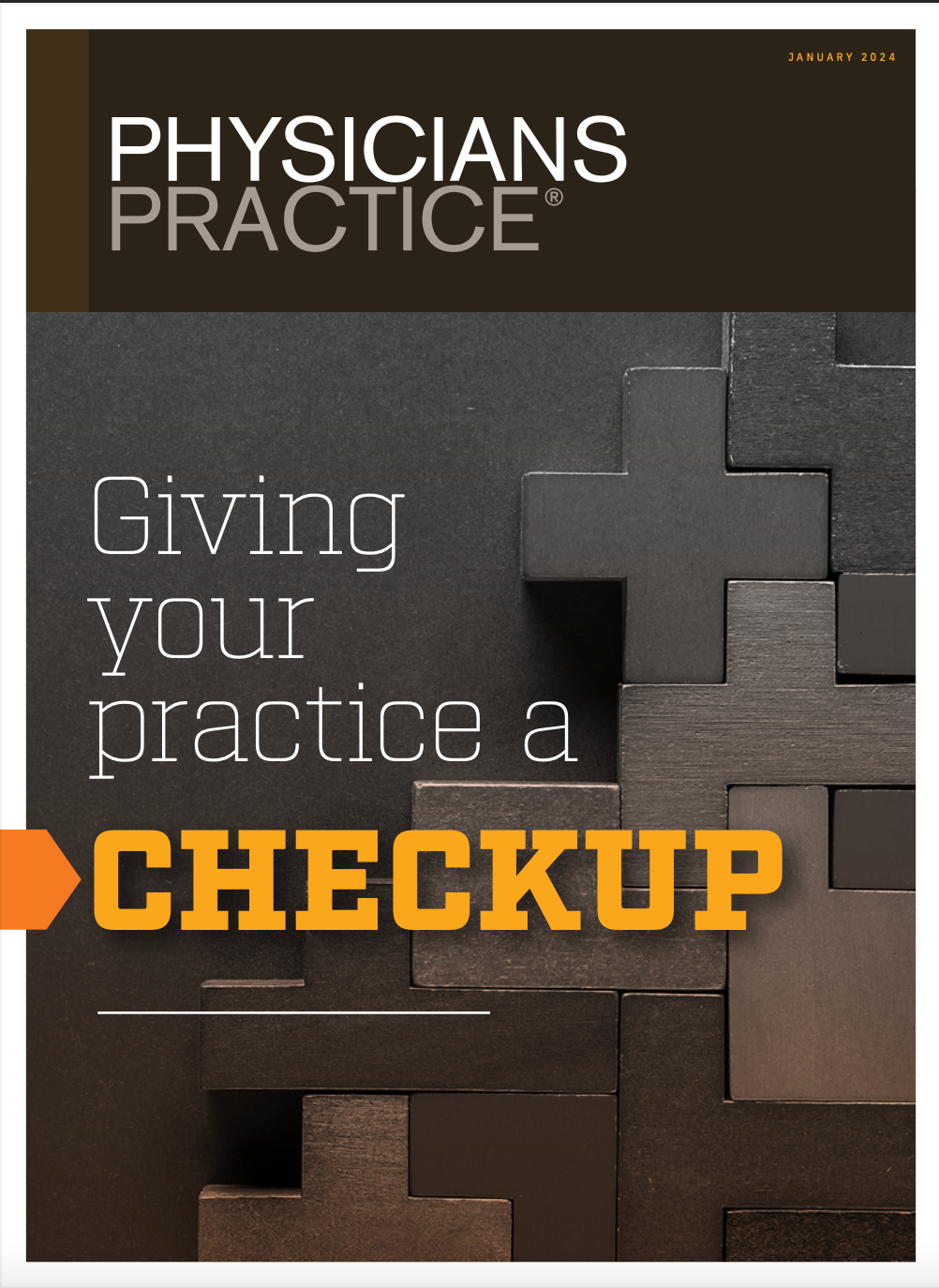Giving your practice a checkup: Obtaining and maintaining referrals
How do you differentiate yourself from the competition?
© 4zevar - stock.adobe.com

Talks on medical marketing often begin with the three A’s of marketing: availability, affability, and affordability. Physicians consider themselves available and likable and offer appropriately priced services. How do you differentiate yourself from the competition?
Just having a website, using fancy stationary, a slick three-color brochure or a practice logo will not do the trick. Let the truth be told--the last thing you need are brochures, expensive stationery, or logos.
One of the biggest misconceptions about marketing is that to do it well, you must spend lots of money to have an effective marketing strategy. Many steps are far more effective and essential to marketing than polishing your public relations image. The most essential element of your marketing plan is to make your practice user-friendly. Nowhere is this more important than in working with your colleagues who can refer patients to you. This blog will describe 10 techniques that any doctor can use to enhance their relationships and their referrals with their referring physicians.
1) Writing an effective referral letter
The goal of obtaining referrals from your colleagues is to see that your name crosses the mind and the desk of the referring physician as frequently as possible and positively. If you interview referring physicians, prompt communication is one of the most important reasons they refer. According to the Annals of Family Medicine, more than 50% of physicians state that effective communication is the reason that they select a doctor to send their patients.
Why do physicians refer to other colleagues?
- Return pt. to PCP 100%
- Medical skill 88%
- Access to the practice and acceptance of insurance 55%
- Previous experience with the specialist 59%
- Quality of communication 53%
- Board certification of specialist 33%
- Medical school, residency <10% *Ann Fam Med 2:245,2004
The traditional referral letter is far too long, often 2-3 pages, arrives 10-14 days after the patient was seen, and is very expensive, costing a practice $12-$15 for each letter sent. The goal of an effective referral letter is that your note arrives before the patient returns to the referring physician.
The key ingredients of an effective referral letter are 1) Diagnosis, 2) Medications you have prescribed for the patient, and 3) Treatment plan. You can go to the bank on this recommendation, and that is the referring doctor is not interested in the nuances of your history or physical exam. They want the three ingredients listed above.
Providing the referring doctor with the three ingredients can easily be accomplished using a boilerplate letter, as shown in Figure 1.
Figure 1

For example, suppose Dr. Bill Smith refers Jane Doe, who has an overactive bladder and a cystococele.
Her urinalysis is negative, you prescribe an anticholinergic agent, and you plan to see the patient in one month and do a symptom check and possibly a urodynamic study if she is not better.
Dear Bill,
Jane Doe was seen for a problem of an overactive bladder. I recommended XXXX, 5mg\day. I plan to obtain a urodynamic study and cystoscopy if she does not improve on the prescribed smooth muscle relaxants.
I will keep in touch with you regarding her progress.
Sincerely,
Neil Baum
Now, the letter can be faxed to the referring doctor often before the patient leaves the office, and you can be sure that the letter arrives before the patient calls the doctor with questions or concerns.
As a result, you keep the referring physician informed and can function as the captain of the patient’s healthcare ship.
Now, EMRs can fax the entire note to the referring physician. If you ask a referring physician if they would like to read your complete note, you will find that the answer is usually no. However, most EMRs will allow you to select fields that contain the diagnosis, the medications prescribed, and the treatment plan.
2) Personally meet every physician who refers a patient
Try to meet all new physicians in your area. You should contact new physicians and tell them about your areas of interest or expertise.
3) Refer new patients to referring physicians
Don’t have your referrals carved in stone, and use the same colleagues. If a doctor is sending you patients, it is in your best interest to reverse refer when a patient needs a primary care doctor, endocrinologist, or cardiologist.
You can be sure these referring doctors will appreciate your referrals.
4) Create a lunch and learn program
You want other offices and medical staff to get to know your staff and what you do. There’s no better way than to have a lunch program in your office and extend an invitation to other offices in the area. At the program, have all the staff introduce themselves. Give them a tour of your office and even provide a 3–5-minute lecture on areas of your interest and expertise.
5) Recognize and acknowledge the accomplishments of referring physicians and their families
If one of your referring physicians has received an honor or an award, send them a congratulatory note. Also, if their children have accomplished an academic or athletic achievement, acknowledge it with a note. You can be sure it will be one of the only ones they receive, and they will appreciate your taking the time to send them a personal note.
6) Share information with a no-meeting journal club
It is difficult to keep up with medical literature. It is challenging to keep up with the literature in your own specialty and articles appearing in other publications. One of the easiest ways to accomplish this is to copy articles that may interest your colleagues and target their reading by placing a Post-It note where you would like them to look so they don’t have to read the entire article.
7) Share non-medical as well as medical information
It is appreciated to share non-medical information with your colleagues and let them know you think of them even when you are not discussing patient care. An example is that one of my colleagues is a collector of fine pens. I saw an article about expensive pens made with diamonds and sent the story to my friend suggesting that he might tell his wife what was on his wish list.
8) Keep the referring doctor in the medical loop
If you are caring for the patient and plan to discharge the patient, make sure that you or someone in your office contacts the referring doctor and informs them that the patient is being discharged so that they don’t come and make unnecessary rounds on the patient. Other times to notify the referring doctor are when you admit their patient to the hospital, after surgery or a procedure, or when you have a significant lab/path report.
9. Be user-friendly
Ensure that if you perform surgery on a referred patient, you dictate the discharge summary. If the patient is to be discharged with medications, be sure that you write those medications for the patient. Also, it is a nice convenience for the patient if they need to return to the referring doctor and arrange to visit both doctors on the same day.
10. Don’t forget non-physician referral sources
Non-physician referrals include nurses, nurse practitioners, physician assistants, pharmacists, pharmaceutical representatives, social workers, lawyers, beauticians, and manicurists. Many of these non-physicians can send patients to primary care doctors and specialists.
11. Gift giving
This is the least likely method to attract referrals. If you send a fruit and wine basket at holiday time, it will be one of many that the referring doctor will receive. Certain gifts will make you stand out from others at holiday time. A good example is a set of personalized luggage tags. The tags were laminated with the doctor’s last name on a red tag, making it easy to identify on the baggage claim carousel. Finally, I would suggest sending your gift at Thanksgiving instead of right before Christmas. Doctors are not as rushed now, and they are more likely to remember your gift.
Bottom Line:
Physicians can build a practice by word of mouth and do a great job caring for the patients, hoping they will tell others about their positive experiences. However, there are great opportunities to enhance the referring doctor relationship. Try a few of these ideas, and you will certainly see your referrals increase significantly.
Neil Baum, MD, a Professor of Clinical Urology at Tulane University in New Orleans, LA. Dr. Baum is the author of several books, including the best-selling book, Marketing Your Medical Practice-Ethically, Effectively, and Economically, which has sold over 225,000 copies and has been translated into Spanish.
Asset Protection and Financial Planning
December 6th 2021Asset protection attorney and regular Physicians Practice contributor Ike Devji and Anthony Williams, an investment advisor representative and the founder and president of Mosaic Financial Associates, discuss the impact of COVID-19 on high-earner assets and financial planning, impending tax changes, common asset protection and wealth preservation mistakes high earners make, and more.
Is your practice ready for the Trump tariffs?
April 7th 2025Tariffs are set to drive up costs across industries — including health care — impacting everything from medical supplies to retirement accounts. Take a look at the ripple effects on medical practices and some proactive strategies for physicians to stay one step ahead.
